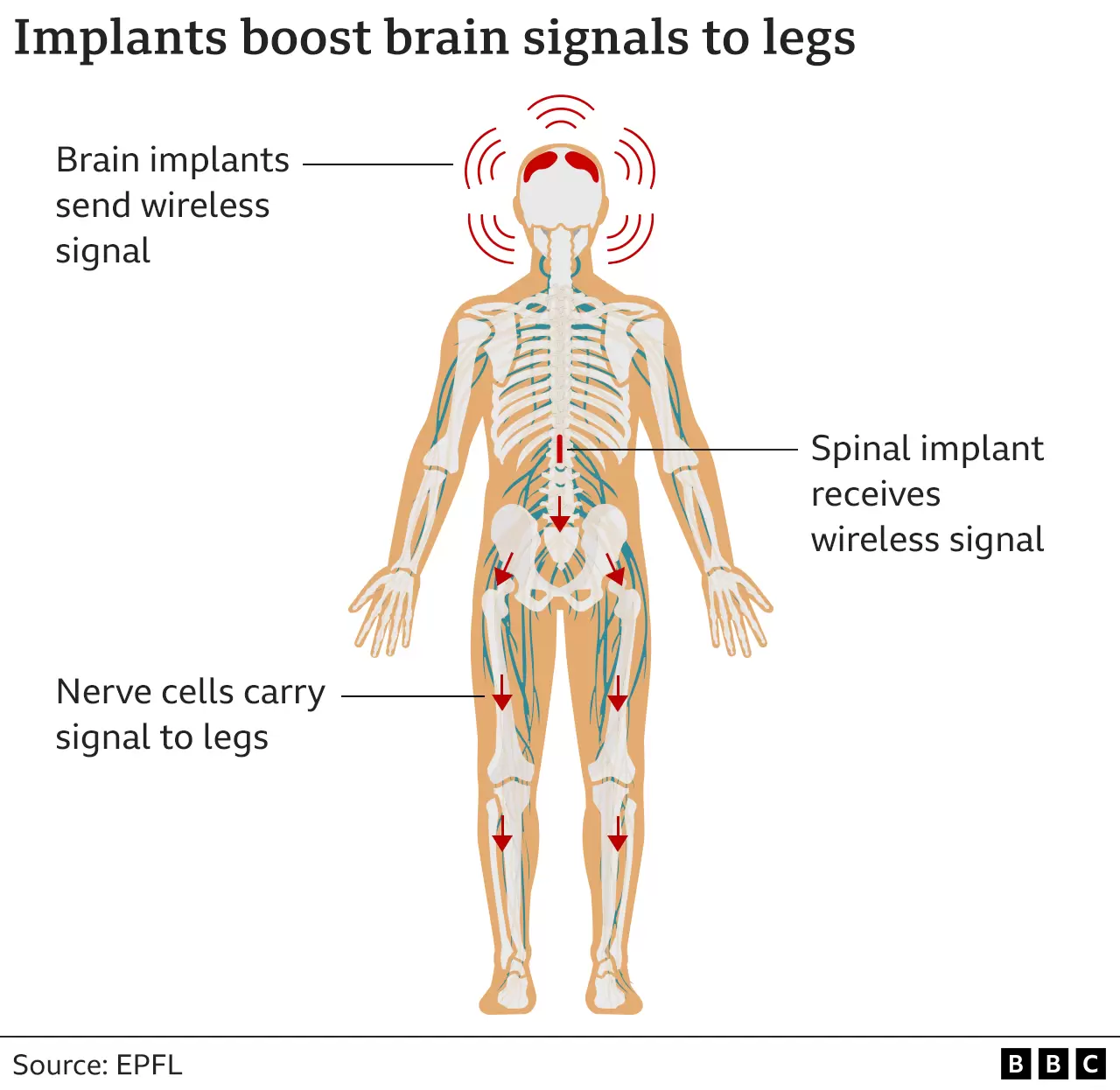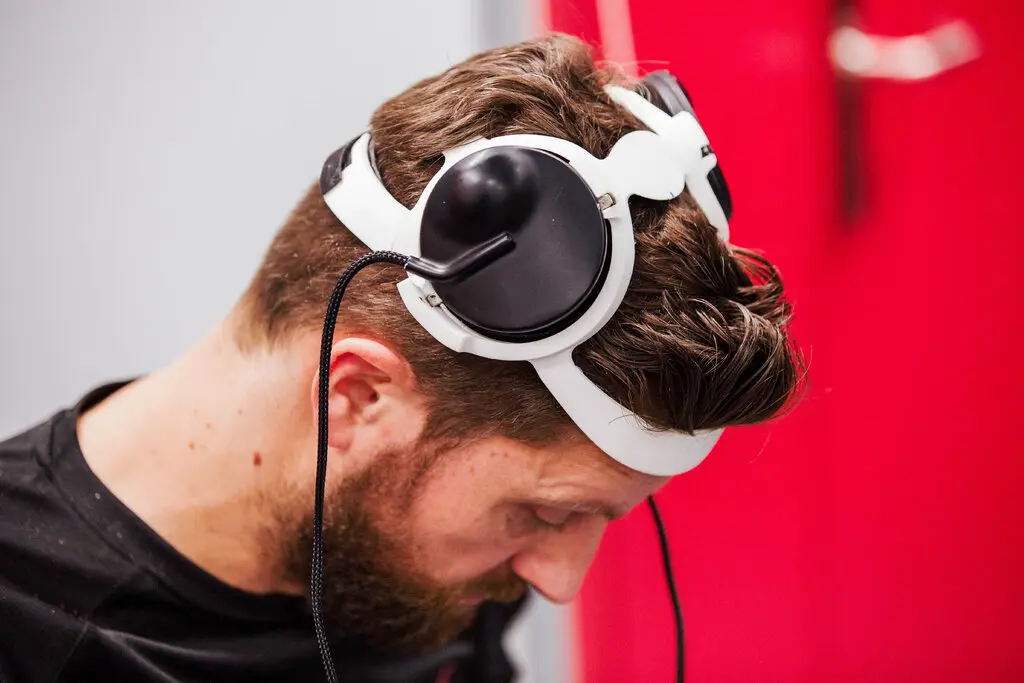AI acts as a thought decoder and allows brain to control legs bypassing damaged parts of the spinal cord.
A team of researchers from France and Switzerland worked for over a decade on Gert-Jan Oskam, who had been paralyzed following a motorcycle accident in 2011 from the waist down.
Though the majority of tech is traditional, the highlight is what’s being called the “digital bridge.” This is the AI part. The brain implants help coordinate walking with the help of this bridge, enabling him to walk with his thoughts (which is technically what we do normally).
The brain communicates with different muscles through the central nervous system by sending signals through neuron pathways. Paralysis is essentially a breakdown in these pathways, disabling the brain from sending signals and ultimately, making it impossible to control or move muscles. Parts of Oskam’s spinal cord were damaged, breaking this neural pathway.
The digital bridge installed on Oskam transforms the signals of his brain (for example, an attempt to move the right foot forward), which can be called thoughts, and translates that into actions with the help of implants.
Intentions are converted into electrical signals, leading up to the action, bypassing the damaged parts of the spinal cord.
So, the brain is communicating wirelessly. Bypassing the damaged parts of the central nervous system, it’s transmitting signals directly to the implants and controlling the (neurologically disconnected) spinal cord to move the leg.

The signals are then converted into electrical activations of the spinal cord and that, in turn, activates the muscles of the legs.
This digital bridge is nothing short of a primitive form of an artificial spinal cord, which could translate into an artificial central nervous system sooner than we expect. And AI plays a critical role as it’s responsible for transforming thoughts into electrical signals correctly. In many ways, AI in this case is a thought decoder.
The lead researcher, Grégoire Courtine, is a spinal cord specialist at the Swiss Federal Institute of Technology. He says003A
“So he is a sort of cyborg in a way, with lots of implants to fix his central nervous system.”
The researchers hope to make the technology more accessible.
Their study has been published in Nature. It notes an additional benefit as well:
“BSI triggered a reorganization of neuronal pathways that was responsible for the additional neurological recovery.”
Essentially, the natural recovery of neurological pathways was significantly better with this system and Oskam was able to do basic activities even when the system was off.

